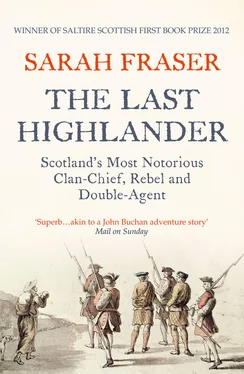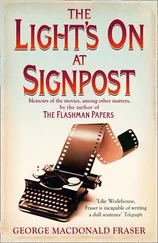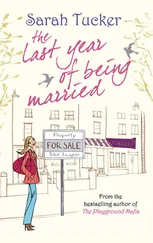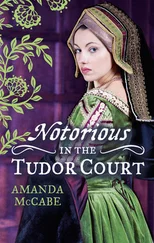Early next morning, at around two o’clock, Simon and a group of armed guards entered his bride’s apartments. A drunken Simon instructed the maids to undress Amelia for bed, and then withdraw. When he returned nothing had happened, so he ordered two clansmen to remove the serving women.
Amelia ‘cried out most piteously’ as two men lifted her to the bed, and struggled to prepare the lady for her wedding night. Bending over her, Simon held aquavitie 4 to her nose. One man fumbled at her shoes. A maid rushed to her lady and attempted to untie Amelia’s clothes. Lady Lovat kicked her away. Determined, Simon searched for a dirk to cut his wife’s stays, found none, and told one of his men to do it.
Impatient for this to end, they ‘put my Lady on her face and spread her arms’ and cut the laces of her corset, and finally left Amelia and Simon alone. Versions of what happened that night circulated almost immediately. In one account the piper played in an adjacent room to drown Amelia’s screams, and in the morning a servant found her speechless and out of her senses. Others denied it. By dawn, however, silence hung over the castle. Simon had put the bachelor state behind him.
The Murrays erupted in fury. The sister of Scotland’s most powerful man was the ‘most violented lady’ in the kingdom, they said. Amelia’s father, the Marquis of Atholl, commanded Lords James and Mungo to get her away. Atholl pressed Tullibardine to obtain an order for government troops to ‘catch that base creature, Simon Fraser, and his accomplices’. From Inverness to Edinburgh and London, gossip and letters argued the question: had he raped a Marquis’s daughter? If he had forced her, and was not mad or stupid, what had driven him to do it?
Major Fraser of Castleleathers recorded that very quickly Lady Amelia made up her own mind. ‘Whatever new light the lady had got,’ she desired her husband to ‘send for Mr William Fraser, minister of Kilmorack, to make a second marriage (not thinking the first valid)’. The hell of that night left her not knowing where she stood.
Simon said he hoped the marriage would allay ‘the Marquis of Atholl’s fury against him’, but the news that Atholl had acquired Simon Fraser as a son-in-law, unsurprisingly, sent the old man into a frenzy. There ‘was nothing in his mind but the business of the base Frasers’, wrote his wife. Old Atholl was adamant Tullibardine must make their quarrels a government concern at the highest levels. For the next two years, the records of the Privy Council chattered with Inverness and the Frasers.
The forced marriage and consummation were brutal errors of judgement that Simon would regret all his life. Again he had used a lamented but tolerated old tradition and pushed it to new levels in order to force a match with a Marquis’s daughter against her family’s will. The practice was normally used to make a girl fall in line with her family’s wishes, against her will.
Thomas Lovat wrote to the Earl of Argyll, explaining first that the Saltoun incident had been settled by the Sheriff, and second, that his son and Amelia were now legally married. It was better to let it all die down, he said. Besides, he observed cannily, the Murrays’ ‘design of appropriating the estate and following of Lovat to themselves, is made liable to more difficulties by that match’. Argyll agreed entirely. Tullibardine’s political enemies stood by Simon as a way to attack the High Commissioner and curtail his vast ambitions to rule all Scotland with his brother-in-law, the Duke of Hamilton.
In order to convince the legal establishment in Edinburgh to act against Simon, the Murrays required their star witness: the victim of the alleged crime, Lady Amelia Lovat. Rumours buzzed around Inverness that the dishonoured Lady was now dead. When Lords Mungo and James Murray rode to Castle Dounie they found it empty. Simon and Amelia had withdrawn, with a company of armed men, to the isolation of Eilean Aigas, a wooded rocky islet in the middle of the River Beauly. Simon hoped the black, fast-flowing tangle of currents surrounding the island would make their retreat impregnable.
They stayed here for several weeks. Simon wrote to a friend in Inverness explaining he was struggling to keep up his wife’s spirits. ‘I know not how to manage her,’ he wrote unhappily, ‘so I hope you will send me all the advice you can.’ He was not used to coping with a woman, a mother, who was just a few years older than him. For a lady of rank to live an itinerant life, adjunct to a fugitive and far from her children, was very hard. Simon soothed her as best he could.
Amelia Lovat’s position was a confused one. A ‘shamed’ lady, even the daughter of a Marquis, was a social outcast; she knew this. Besides, she had sworn a deposition that her marriage was genuine when the Reverend James had visited them at Dounie. When Amelia’s father found this out he was furious, shouting that the Fraser clerics were all ‘false prophets and wizards’. She yearned to see her brothers, perhaps to find out when she might come back, or to get some degree of acceptance from her family. Though Simon did not trust them, he allowed Amelia to travel down the glen to meet with her brothers. He would never see her again.
At Castle Dounie, James Murray greeted his sister tenderly, and asked if she was ‘lawfully married to Captain Fraser of Beaufort?’ She answered that she was. Lord James pulled away, raised his foot and ‘gave her along the belly’, yelling at her that she was a bitch. Lady Amelia doubled over. An Inverness laird, Fraser of Culduthel, rushed forward to aid her, but Murray men overpowered him. They pushed Amelia onto a horse and galloped off towards Inverness.
With Lady Amelia on her way to Blair Castle, Tullibardine persuaded the Privy Council and Court of Session to issue ‘Letters of Intercommuning’ forbidding anyone to ‘commune’ with the Frasers. In effect, ‘whatever slaughter, mutilation, bloodshed, fire-raising or other violence, shall happen to be acted’, by anyone who assisted the law in ‘seizing, reducing, and bringing them in dead or alive … the same shall be held as laudable good and warrantable service to his Majesty’, but even more to the Atholl Murrays.
Colonel Hill warned Tullibardine that local people on both sides ‘talk very slightingly of the matter and say now there is no need of sending forces’. The issue was settled; no one wanted to stir it up to a savage feud where the more powerfully ambitious side used the law to inflict crushing blows and the other eventually responded in kind, having nothing to lose. Tullibardine ignored him. A first wave of troops was sent in, commanded by Amelia’s brothers. The ordinary clansmen, weakened by the famines of King William’s ill years, found increased troop numbers quartered on them and could not cope. The people began to starve.
Over the next few weeks, the Murray ladies at Blair Castle pressured Lady Amelia to condemn Simon Fraser. ‘My Lord and I has told her … over and over,’ her sister wrote to Katherine Tullibardine, ‘that if she has any regard to her own honour and reputation, she will for once lay aside her reserved humour … and tell, to all she speaks with, the abhorrence she has of that base man.’ If Amelia maintained she was married to Simon, there was no case.
Her refusal to come to court and declare she had been raped drove her family mad with frustration, and her despair is clear from her letters. ‘I have the comfort in my extreme misery to be owned by such relations … which is God’s goodness to me … one so unworthy and so unfortunate.’ If she assented to her family’s description of her as ruined, what sort of future would she face? By condemning Simon, she condemned herself. Her shame would feed scandal sheets from Inverness to Paris. Her family pushed on oblivious. She was their political pawn. Lord James Murray believed that Tullibardine and his eldest brother were prepared ‘to ruin my sister’s and niece’s interest’ – the Lovat estates – to exact vengeance, kill Simon and regain control.
Читать дальше












